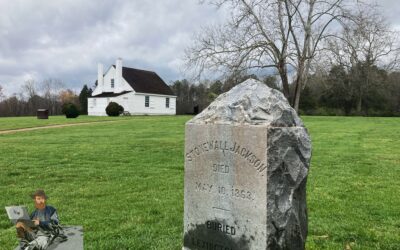Recently I had a guest blogger post on Health and Medicine in the Civil War. Shortly after the post was up, I received an email from Terry Reimer who is the Director of Research at the National Museum of Civil War Medicine about some points that needed to be clarified.
In an effort to provide accurate information, I want to share with you the correct information that I received from Terry. The following is some of the email that I received.
The staff at the National Museum of Civil War Medicine has enjoyed your website “Teaching the Civil War with Technology.” We truly appreciate having a link on the page on Health and Medicine during the Civil War, however, there are a few points concerning Civil War medicine that we wish to clarify. I have listed them below in the order in which they appear.
“Standardized medical schools did not yet exist…”
In America, medical schools were established to provide organized lectures to supplement the practical learning of an apprenticeship. In 1765 the Philadelphia College of Medicine, now the University of Pennsylvania, became the first medical school in the United States. By 1860 a total of one hundred medical schools had opened, although many had only a short life. Over forty were operating at the start of the war in both the North and the South. Most schools provided lectures for 14 to 16 weeks a year. There were no pre-medical education requirements.“Soldiers had to rely on makeshift field hospitals…”
While field hospitals were indeed “makeshift,” they were not replaced by general hospitals. Both field hospitals and general hospitals are steps in the treatment of the wounded. At a field hospital, usually located in a barn or tent to the rear of the fighting, wounded soldiers were triaged into three categories: mortally wounded, slightly wounded, and surgical cases. Most surgeries were amputations and took place at the field hospitals. When it was safe to do so, the patients were moved to the larger more permanent hospitals.“Later, general hospitals were established near battlefields…”
Prior to the Civil War, any organized system of hospitalization was virtually unknown in the United States. With the large number of wounded and sick needing long-term care, a network of general hospitals was created in cities in both the North and the South. At first, large existing buildings were taken over for hospitals, but soon both armies constructed large pavilion-style hospitals that were clean, well ventilated, and highly efficient. The quality of care that the patients received improved dramatically after the opening months of the war, and the general hospitals had an average mortality rate of 8 percent.“…treated at unsanitary hospitals.”
Hospital sanitation was certainly not up to today’s standards, but most hospitals would not have been considered unsanitary for their time. Surgical cleanliness and the use of antiseptics as we know it today did not exist during the Civil War. Lister established the practice of antiseptic surgery using carbolic acid in 1867, a few years after the war was over. Germ theory was unknown, and the rigorous cleaning of hands and surgical instruments and use of antiseptic dressings did not occur until after the Civil War. However, some of the medicines and chemicals used by Civil War surgeons did have antiseptic qualities. Hospital cleanliness was considered important and the chlorine, bromine and charcoal used for this purpose contributed to a more “antiseptic” atmosphere for the General Hospitals.Camp life itself was a threat to a soldier’s health. Healthy recruits became victims of illnesses that were easily spread due to the large number of people in the camps, the often unsanitary conditions, and the poor diet of the soldiers. Childhood diseases such as measles could devastate regiments, and many men succumbed to diarrhea and dysentery. Of the nearly 620,000 soldiers who died during the Civil War, two-thirds died not of bullets and bayonets, but of disease.
“Lead poisoning was called dropsy…”
The term dropsy was used to denote edema, the buildup of fluid in the tissues of the body, and not lead poisoning.“These now outdated terms reflect the uncertainty and lack of knowledge…”
We need to be aware that it is unfair to judge people in history based on the knowledge that we have today. Civil War-era caregivers were not “uncertain” and did not “lack knowledge,” unless they are being compared to people whose resources are far greater than what was available to them. It is comparable to wondering why the people of the 1970s did not use the internet.
Bibliography
The Medical and Surgical History of the Civil War, prepared by Surgeon General Joseph K. Barnes, 1870 (reprinted 1991, Broadfoot Publishing Co., Wilmington, N.C.; originally titled Medical and Surgical History of the War of the Rebellion 1861-1865).
Civil War Medicine: Challenges and Triumphs; Alfred Jay Bollet, Galen Press, 2002
Doctors in Blue, The Medical History of the Union Army in the Civil War; George W. Adams, Collier, 1985 (first printing 1952)
Doctors in Gray, The Confederate Medical Service; H. H. Cunningham, Louisiana State University Press, Baton Rouge, 1993 (first printing 1958)
One Vast Hospital: The Civil War Hospital Sites in Frederick, Maryland after Antietam; Terry Reimer, National Museum of Civil War Medicine, Inc., 2001
Divided by Conflict United by Compassion: The National Museum of Civil War Medicine; Terry Reimer, NMCWM Press, 2004
Death is in the Breeze: Disease during the American Civil War; Bonnie Brice Dorwart, NMCWM Press, 2009
Prologue to Change: African Americans in Medicine in the Civil War Era; Robert G. Slawson, The NMCWM Press, 2006
Bad Doctors: Military Justice Proceedings Against 622 Civil War Surgeons; Thomas P. Lowry and Terry Reimer, NMCWM Press, 2010
Pictorial Encyclopedia of Civil War Medical Instruments and Equipment, Volumes I, II, and III; Gordon E. Dammann, Pictorial Histories Publishing Co., Missoula, MO, 1983, 1988, and 1998
Images of Civil War Medicine: A Photographic History; Gordon Dammann and Alfred Jay Bollet, Demos Medical Publishing, 2008
So, I want to apologize to everyone for the misinformation in the original post. I also want to say thanks to Terry and the folks at the National Museum of Civil War Medicine for providing the correct information. They even invited me down for a visit.



0 Comments